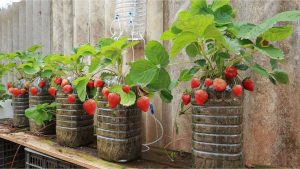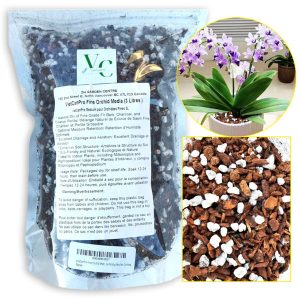Learn how to grow strawberries in plastic bottles with this step-by-step guide! Discover eco-friendly gardening, soil preparation, drip irrigation, and landscape design tips for a bountiful harvest in just 75 days.

Strawberries are a favorite fruit for many gardeners due to their sweet, juicy flavor and ease of cultivation. If you have limited space or want an innovative way to grow strawberries at home, planting them in plastic bottles is an excellent solution. This method not only helps recycle plastic waste but also allows you to grow delicious strawberries in a compact, space-efficient manner. In this guide, DH Landscape Solutions, a leader in landscaping services, will take you through every step of the process to ensure you achieve a successful harvest.
Why Grow Strawberries in Plastic Bottles?
Growing strawberries in plastic bottles has numerous benefits:
- Space-saving: Ideal for urban gardening and small balconies.
- Eco-friendly: Helps recycle plastic waste.
- Efficient watering system: Using a drip irrigation system saves water and ensures the plants receive adequate moisture.
- Protection from pests: Elevating strawberries in bottles minimizes exposure to ground pests and soil-borne diseases.
- Aesthetic appeal: Hanging bottles with cascading strawberries create a beautiful vertical garden, making them perfect for garden landscaping.
Step 1: Preparing Strawberry Seeds for Germination
Choosing the Right Seeds
To begin, select ripe strawberries. Riper strawberries contain mature seeds that have a higher germination rate. If you prefer, you can also purchase high-quality strawberry seeds from a garden center.

Extracting the Seeds
- Peel off the outer layer of the strawberry skin where the seeds are embedded.
- Allow the skin to dry for a few hours to make seed extraction easier.
- Rub the dried skin gently to separate the seeds from the pulp.
Planting the Seeds
- Fill a small nursery tray or seed-starting container with well-draining, nutrient-rich soil.
- Spread the seeds over the surface, then lightly cover them with a thin layer of soil.
- Mist the soil gently to keep it moist.
- Place the container in a bright area with indirect sunlight.
- Water once a day in the early morning, ensuring the soil remains damp but not soggy.
Germination Tip: Strawberry seeds take 2-3 weeks to sprout, so be patient and maintain consistent moisture levels.
Step 2: Preparing Plastic Bottles for Planting
Choosing the Right Plastic Bottles

For best results, use large plastic bottles (e.g., 2-liter soda bottles or larger) with sturdy material. Transparent bottles are ideal as they allow you to monitor the moisture level in the soil.
Cutting and Modifying the Bottles
- Rinse and clean the bottles thoroughly.
- Cut a large opening on one side of the bottle to create a planting space.
- Poke small drainage holes at the bottom to prevent waterlogging.
- If hanging the bottles, punch holes near the top and attach strong strings for support.
- Insert a small drip irrigation line or make small holes in the cap for controlled watering.

Step 3: Preparing the Soil Mix
Strawberries thrive in nutrient-rich, well-draining soil. Create a balanced mix using:
- Humus soil (40%) – Provides essential nutrients.
- Organic compost (30%) – Enhances soil fertility.
- Perlite or sand (20%) – Improves drainage.
- Coconut coir or peat moss (10%) – Retains moisture.

Fertilization for Healthy Growth
Before planting, mix organic fertilizer into the soil. Strawberries benefit from natural fertilizers such as:
- Composted manure – Boosts nitrogen levels.
- Banana peel fertilizer – Provides potassium.
- Eggshell powder – Adds calcium for strong roots.
Step 4: Transplanting Seedlings into Plastic Bottles
- Once your strawberry seedlings have grown 2-3 leaves, they are ready for transplanting.
- Fill the prepared plastic bottles with the soil mixture, leaving space at the top.
- Carefully remove the seedlings from the nursery tray and plant them in the bottle.
- Water the soil immediately after planting to help the roots establish.
- Position the bottles in a well-lit area with 6-8 hours of sunlight per day.
Step 5: Setting Up Drip Irrigation
Drip irrigation helps maintain consistent moisture levels, which is crucial for strawberries. Here’s how to set it up:
- Use a small water container or bottle as a reservoir.
- Connect a drip irrigation line from the reservoir to each bottle.
- Ensure a slow and steady water release to prevent overwatering.
- Regularly check for blockages in the drip system.

Step 6: Providing Nutrients for Healthy Growth
20 Days After Transplanting: Nutrient Boost
At this stage, strawberries require additional nutrition. A great natural supplement is honey water, which provides essential carbohydrates and promotes healthy plant growth.
How to Use Honey Water
- Mix one tablespoon of honey with one liter of water.
- Pour this mixture into the drip irrigation system or water the soil directly.
- Repeat every 10 days for optimal growth.
Step 7: Boosting Fruiting and Flowering for a Thriving Strawberry Garden
45 Days After Transplanting: Encouraging Flowers
By day 45, your strawberry plants will start producing flowers. To stimulate fruiting, apply a phosphorus-rich fertilizer such as:
- Bone meal
- Fish emulsion
- Organic bloom fertilizers
75 Days After Transplanting: Harvest Time!
By day 75, you’ll have delicious, ripe strawberries ready for harvest. To ensure the best flavor:
- Harvest strawberries in the early morning when they are at peak freshness.
- Pick fruits that are fully red for the sweetest taste.
- Store them in a cool place or enjoy them fresh!
Landscaping and Garden Design Tips
Strawberries in plastic bottles can be a beautiful addition to your backyard landscaping, front yard landscaping, or even garden landscaping. Arrange the bottles in a landscape design that complements your space. If you need help setting up a sustainable garden, consider hiring landscaping companies or a landscaping architect to create a professional setup.
Exclusive Offer from DH Landscape Solutions

Whether you’re planning backyard landscaping, green landscaping, or need help with Landscaping Services, DH Landscape Solution ensures your garden flourishes. Get ahead in your Landscaping Services with DH Landscape Solution. Recognized as the best landscaping company and the best landscaping company in Vancouver, we offer unparalleled expertise to help you achieve your gardening and landscaping goals. For a limited time, enjoy a free Landscaping Services consultation and receive 20% off. Whether you’re planning backyard landscaping or need expert advice for landscaping services, we’re here to help. Contact us today to claim your voucher and take the first step toward greener gardening.
Final Thoughts
Growing strawberries in plastic bottles is an innovative, sustainable, and rewarding gardening method. Whether you have a small balcony or a large backyard, this method allows you to enjoy fresh, home-grown strawberries with minimal space and resources. By following the step-by-step guide outlined above, you can achieve a bountiful strawberry harvest in just 75 days!
Start your strawberry-growing journey today, and enjoy the sweet rewards of your eco-friendly garden!
Have you tried growing strawberries in plastic bottles? Share your experience in the comments below!

